2019 Nissan Altima Vs Honda Accord Comparison

All-wheel drive is becoming an important factor when it comes to buying a new car, which is why so many people are flocking to SUVs and crossovers. But why get a crossover when you can get a sporty sedan with extra traction? That’s the thesis behind the new Nissan Altima, which now offers AWD along with a sleek new look.
Even if it has AWD, though, the Altima still needs to be as good as one of the best and most popular family sedans out there, the Honda Accord, to stand a chance in this tough segment.
The Honda Accord is fun to drive, spacious, and full of technology, so the Altima needs to one-up it in each category if it wants to be the best family sedan in its class. We’ve brought the two cars together to see if the new Altima has what it takes.
Get the Flash Player to see this player.
Requianted with the Honda Accord
The Honda Accord has been on top of this segment for a couple of years now, while the Altima has struggled to be mentioned in the top three. But it’s fun to root for an underdog, right? Especially since being the underdog can push an automaker to innovate more and make a better car. While the all-new Altima has a lot going for it, the current Accord is the complete package: It’s powerful yet efficient, sporty yet comfortable, spacious, and feature-filled.
ALSO SEE: Honda Accord vs Toyota Camry Comparison
The interior alone can sell you on the Accord — it’s well-built, comfortable, and it’s clear that Honda benchmarked luxury automakers while designing it. There is also a ton of space in this sedan, which makes it suitable for families.
The Accord has a crossover-shaming 16.7 cubic feet of storage in the trunk and the rear seats can fold down for even more space. Speaking of, the rear seats are almost limo-like with over five more inches of legroom compared to the Altima.
Besides the spaciousness, the Accord’s interior is loaded. There are a lot of features and details in this cabin, including some that aren’t expected on a mainstream brand like Honda. While the leather and trim are conservatively premium, the addition of a wireless phone charger, digital gauge cluster, and head-up display make the Accord feel more future-proof. There are also heated and ventilated seats and a heated steering wheel, which is always nice for drivers in colder climates.
The infotainment touchscreen is large and easy to use and also offers Android Auto and Apple CarPlay. My only criticism with the Accord’s interior is that the seating position just doesn’t feel right. There isn’t much support and you can feel a bit numb after a long trip.
ALSO SEE: Honda Accord vs Honda Civic: Which Sedan is Right For You?
The model we have here is equipped with a turbocharged 1.5-liter engine that makes 192 horsepower and 192 lb-ft of torque. It feels far more spritely off the line than those figures suggest. Put your foot down, and the continuously variable transmission pitches the engine into its power band and sends you off. Lay off the pedal, and you’re rewarded with excellent fuel mileage. Expect 31 MPG combined with this powertrain. You can also switch between Eco mode or Sport mode to better suit your driving preferences.
And while the Nissan Altima also offers its fancy variable compression turbocharged engine, the Accord can also be had with an incredible 2.0-liter turbocharged engine or an extremely fuel-efficient hybrid powertrain. If you want more power or increased efficiency, the Accord has an option for you.
But does Honda have an answer for the all-wheel-drive system of the Altima? No, not really, but not that many people truly need AWD. Sure, some will suggest that all-wheel-drive provides better confidence in inclement weather, but you can also get that feeling with a good set of tires and some common sense on the road. And even if you do have AWD, we still recommend that you buy a dedicated set of winter tires.
ALSO SEE: Why You Absolutely Need Winter Tires, Even If You Have All-Wheel Drive
Besides, all-wheel-drive adds weight, which impacts fuel economy and the way a car feels on the road, and if you drive these two vehicles back-to-back, the Accord feels like a much more responsive car.
Very few automakers put as much emphasis into making platforms feel rigid and sharp as Honda does. The Accord has solid steering with excellent weight, so it never feels light or vague.
You’ll probably be surprised at how much fun the Accord is to drive, but if your commute is boring, there’s an adaptive cruise control system that will let the car handle the mundane part of your drive. The forward collision warning system and blind spot monitor are a bit sensitive, however, throwing up bright lights and jarring warnings when they’re not really warranted. But the adaptive cruise control works very well and brings the car to a stop smoothly and naturally. While the Honda Sensing safety suite doesn’t feel as cohesive as Nissan’s ProPilot Assist offering, it gets the job done.
ALSO SEE: 2019 Nissan Altima Review – VIDEO
Finally, let’s talk about price. An Accord 1.5T EX-L will set you back about $31,040, while opting for the fully loaded Touring model means you’ll have to pick one of the other powertrains, the 2.0L or the hybrid. The hybrid is more affordable at $35,910, while you can add about an extra $1,000 for the 2.0L. If you ask me, the price is definitely worth it, especially over the Altima.
All-Wheel-Drive Altima Keeps Pace
The Accord sets a very high bar to reach, but the new Altima certainly has the design in its favor. Nissan did a great job on the exterior styling, which looks different and in your face, without going full Camry by trying to scare you with its Predator face. The Altima looks classy and stands out when compared to the Accord.
But the design team stumbled a bit with the interior of the Altima, which doesn’t have a very cohesive look. There at least four different trims in the Altima with very fake-looking wood detailing, fake carbon fiber pieces, fingerprint-prone piano black panels, and some aluminum-looking items as well. It just seems a bit messy. There are also a few cheap-feeling plastic parts and some wobbly bits that don’t seem screwed in properly. There’s definitely a quality gap between the Altima and the Accord.
At least the Altima is user-friendly, especially the infotainment system, which also supports Android Auto and Apple CarPlay. Nissan didn’t overcomplicate things, and the system and layout are more straightforward.
ALSO SEE: 2019 Nissan Altima AWD Pros and Cons
While the new Altima is bigger in almost all dimensions compared to the old one, it still features less passenger and cargo room compared to the Accord. At least the Altima has some of the most comfortable seats in the business — they’re supportive and make you feel like you’re floating, which is a major piece of what gives the Altima appeal.
The other part of the puzzle is AWD, which isn’t offered on many other vehicles in this class — the Subaru Legacy is the only other sedan in this class that has AWD. In normal conditions, the Altima acts like a front-wheel-drive vehicle, with all the power heading to the front wheels, but when needed, the system will send 50 percent of the available torque to the rear axle. This should make the Altima stand out with buyers who live in places that have to deal with snowy winters.
Under the hood is a 2.5-liter four-cylinder that makes 182 hp and 178 lb-ft of torque. The transmission is a CVT like the Accord, and it’s pretty decent too, only feeling (and sounding) rough under full throttle acceleration, like when passing. It feels good off the line but feels far more sluggish at highway speeds. If you’re looking for a more responsive vehicle, the Accord is the one to get. The Altima also gets slightly worse fuel economy at 29 MPG combined.
The Altima is very comfortable and composed on the roads, especially over rough pavement. That’s thanks to a feature called Intelligent Ride Control, which uses the rear brakes to stop exaggerated body movements when the car gets unsettled.
One excellent feature is Nissan’s ProPilot Assist, which is like adaptive cruise control with stop and go but with the added benefit of lane-centering, so it helps you follow curves in the road. You still need to have your hands on the wheel and pay full attention, but it does help reduce stress in traffic or during long drives and it works smoothly, accelerating and slowing down naturally.
There are also convenience features like forward collision warning, automatic emergency braking, remote start, and a driver-alertness monitor, which are standard, while Nissan Safety Shield 360 is offered on midrange SV models and above. This adds rear cross-traffic alert, automatic high beams, blind-spot monitoring, and lane-keeping assist. This system isn’t as over-sensitive as the Accord’s which sometimes feels like its beeping at you all time time.
The Altima is also ridiculously easy to park thanks to a top-down birds-eye view camera, which the Accord doesn’t have.
The Verdict: 2019 Nissan Altima vs Honda Accord
Unfortunately, the rest of the Nissan Altima is just average. It doesn’t do one thing particularly well, and it really doesn’t offer anything better than the Accord other than AWD.
The Altima will set you back $33,775, which is a fair price, but not enough to consider it a better deal than the Honda, which feels more luxurious, is more powerful, spacious and better featured than the Nissan.

Sami has an unquenchable thirst for car knowledge and has been at AutoGuide for the past six years. He has a degree in journalism and media studies from the University of Guelph-Humber in Toronto and has won multiple journalism awards from the Automotive Journalist Association of Canada. Sami is also on the jury for the World Car Awards.
More by Sami Haj-Assaad




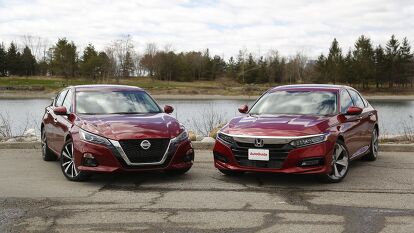























































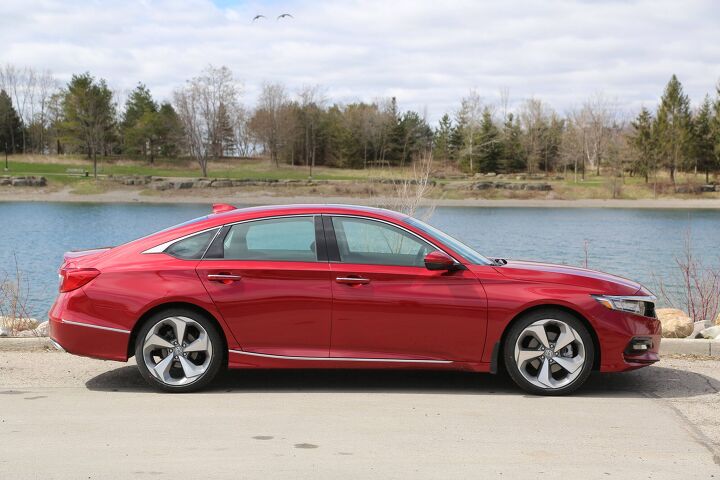























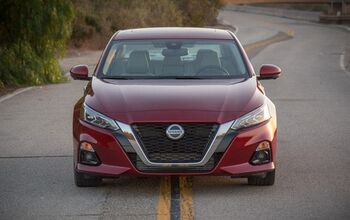
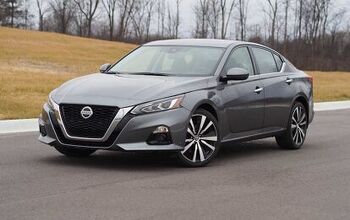
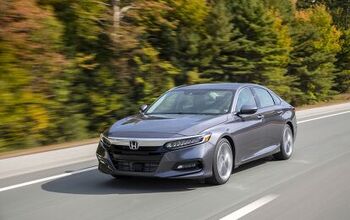
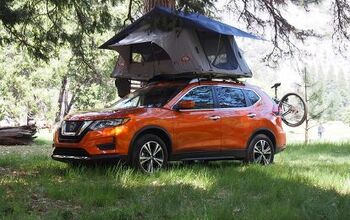
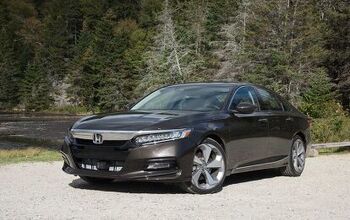



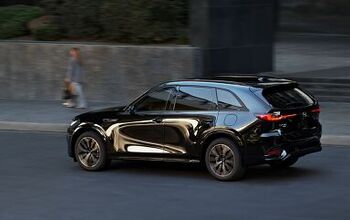




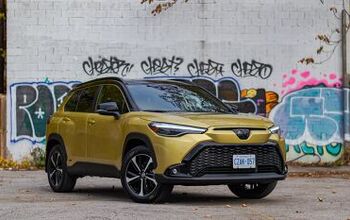

Comments
Join the conversation